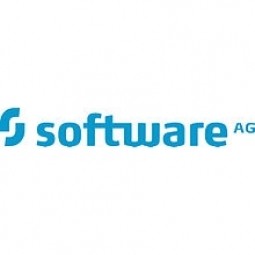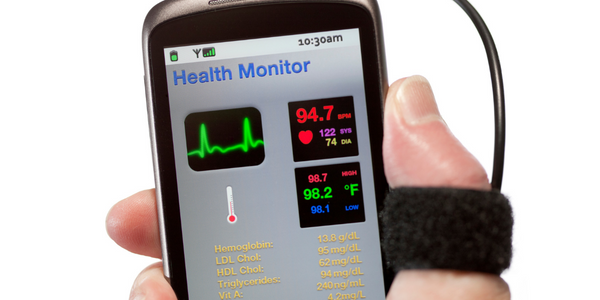Customer Company Size
Large Corporate
Country
- United States
Product
- Digital Business Platform
- In-Memory Data Management powered by Terracotta
- Streaming Analytics powered by Apama
- Integration and Business Process Management powered by webMethods
- ARIS Connect
Tech Stack
- In-Memory Data Management
- Streaming Analytics
- Business Process Management
- Integration
- ARIS Connect
Implementation Scale
- Enterprise-wide Deployment
Impact Metrics
- Productivity Improvements
- Customer Satisfaction
- Cost Savings
Technology Category
- Platform as a Service (PaaS) - Data Management Platforms
- Analytics & Modeling - Real Time Analytics
- Application Infrastructure & Middleware - Data Exchange & Integration
Applicable Industries
- Healthcare & Hospitals
Applicable Functions
- Product Research & Development
- Quality Assurance
Use Cases
- Predictive Maintenance
- Process Control & Optimization
- Real-Time Location System (RTLS)
Services
- System Integration
- Software Design & Engineering Services
About The Customer
The customer is a $70 billion company that has been “inventing the future of health care” for over 130 years. With nearly 130,000 employees working at 250 subsidiary brands in over 60 countries, the company manages the world’s most trusted names in over-the-counter medicine, baby care goods, wound and skin care products, pharmaceuticals, medical devices and biologics. The company is a Fortune 500 company and is known for its innovation and commitment to quality. It has a global presence and is responsible for managing a vast supply chain that includes over 4,000 logistics providers, 150 distribution centers, 100 carriers and eight delivery methods.
The Challenge
The company, a $70 billion healthcare giant, was facing several challenges. These included fragmented access to information, manual input and non-standard processes, newly demanding customers, lack of supply chain visibility, and scattered business process development. The healthcare market was also changing, with shrinking margins and regulations forcing strict compliance with constantly changing laws. The company's traditional way of seeking FDA approval was disjointed and required manual consolidation of paper specs. Each region had its own processes, and each framework operated independently. The company was also struggling with a major hurdle - responding to consumer queries in a timely manner. An employee would have to manually search data logged in different formats across different systems, a process that could take months.
The Solution
The company partnered with Software AG and implemented their Digital Business Platform. This platform helped the company deliver on its vision of taking a process-centric approach, building adaptive applications and leaving behind painful manual data collection from independent systems unable to communicate with one another. By unifying and automating processes, the company cut costs and dramatically reduced its product release cycle and time to market. The platform was able to ingest and integrate data from multiple silos in widely varying formats, allowing the company to respond to queries in minutes or seconds. The company also implemented ARIS Connect, which provided seamless access to process information on a light, web-based UI. This allowed 150 process owners, model viewers, designers and architects to collaborate on more than 200 process models using simple methodologies, diagram types and industry best practices.
Operational Impact
Quantitative Benefit

Case Study missing?
Start adding your own!
Register with your work email and create a new case study profile for your business.
Related Case Studies.

Case Study
Hospital Inventory Management
The hospital supply chain team is responsible for ensuring that the right medical supplies are readily available to clinicians when and where needed, and to do so in the most efficient manner possible. However, many of the systems and processes in use at the cancer center for supply chain management were not best suited to support these goals. Barcoding technology, a commonly used method for inventory management of medical supplies, is labor intensive, time consuming, does not provide real-time visibility into inventory levels and can be prone to error. Consequently, the lack of accurate and real-time visibility into inventory levels across multiple supply rooms in multiple hospital facilities creates additional inefficiency in the system causing over-ordering, hoarding, and wasted supplies. Other sources of waste and cost were also identified as candidates for improvement. Existing systems and processes did not provide adequate security for high-cost inventory within the hospital, which was another driver of cost. A lack of visibility into expiration dates for supplies resulted in supplies being wasted due to past expiry dates. Storage of supplies was also a key consideration given the location of the cancer center’s facilities in a dense urban setting, where space is always at a premium. In order to address the challenges outlined above, the hospital sought a solution that would provide real-time inventory information with high levels of accuracy, reduce the level of manual effort required and enable data driven decision making to ensure that the right supplies were readily available to clinicians in the right location at the right time.

Case Study
Gas Pipeline Monitoring System for Hospitals
This system integrator focuses on providing centralized gas pipeline monitoring systems for hospitals. The service they provide makes it possible for hospitals to reduce both maintenance and labor costs. Since hospitals may not have an existing network suitable for this type of system, GPRS communication provides an easy and ready-to-use solution for remote, distributed monitoring systems System Requirements - GPRS communication - Seamless connection with SCADA software - Simple, front-end control capability - Expandable I/O channels - Combine AI, DI, and DO channels

Case Study
Driving Digital Transformations for Vitro Diagnostic Medical Devices
Diagnostic devices play a vital role in helping to improve healthcare delivery. In fact, an estimated 60 percent of the world’s medical decisions are made with support from in vitrodiagnostics (IVD) solutions, such as those provided by Roche Diagnostics, an industry leader. As the demand for medical diagnostic services grows rapidly in hospitals and clinics across China, so does the market for IVD solutions. In addition, the typically high cost of these diagnostic devices means that comprehensive post-sales services are needed. Wanteed to improve three portions of thr IVD:1. Remotely monitor and manage IVD devices as fixed assets.2. Optimizing device availability with predictive maintenance.3. Recommending the best IVD solution for a customer’s needs.

Case Study
HaemoCloud Global Blood Management System
1) Deliver a connected digital product system to protect and increase the differentiated value of Haemonetics blood and plasma solutions. 2) Improve patient outcomes by increasing the efficiency of blood supply flows. 3) Navigate and satisfy a complex web of global regulatory compliance requirements. 4) Reduce costly and labor-intensive maintenance procedures.

Case Study
Cloud-based healthcare solution for Royal Philips
Royal Philips wanted to launch its cloud-based healthcare solution HealthSuite Digital Platform in China to deliver services to help cope with challenges related to urbanization and population growth. Philips wanted to achieve this goal by combining mobile, cloud computing and big data technologies. To bring this platform and product to market, Philips required cloud computing and local technical service capabilities in China, in addition to a flexible IT infrastructure that could handle user requests.








